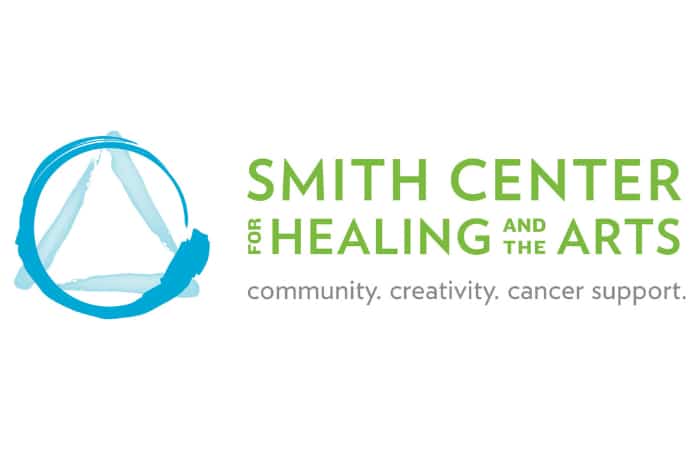What approaches can help you manage sleep disruption?
We present many approaches to reducing sleep disruption and summarize the evidence regarding their effectiveness. Sleep disruption may also be a symptom of stress. If stress is contributing to your sleep disruption, managing your stress will be important in reducing it.
Top practices and therapies for managing sleep disruption
Therapies and practices we have reviewed
The effects of these practices and therapies are described below on this page.
Further therapies and practices
Therapies recommended in clinical practice guidelines; see guidelines ›
Chinese herbal blends (consult a Chinese medicine practitioner)
Cognitive Behavioral Therapy
Hypnotherapy
Conventional approaches
Sleep medications
Insomnia and sleep disruption are often treated with sleep medications which may help temporarily but don’t address the underlying cause. In addition, these medications, such as benzodiazepine agonists, can be habit-forming and may even increase risks of death from a variety of causes including overdose, infections, cancer, depression and suicide, hypnotic-withdrawal insomnia, and automobile crashes, falls, and other accidents.1Kripke DF. Hypnotic drug risks of mortality, infection, depression, and cancer: but lack of benefit. F1000 Research. 2016;5:918. While sleep medications are an option to promote restful sleep, they are only one of many options, as described on this page.
Eszopiclone (Lunesta) showed the best effect at reducing sleep latency among several pharmacological interventions in a large meta-analysisa statistical analysis that combines the results of two or more research studies; the results of smaller research studies addressing the same or similar questions can be analyzed as though they are one bigger, more powerful study of RCTsrandomized controlled trial, a study design in which people are randomly assigned to either an experimental group or a control group to compare the outcomes from different treatments; an RCT is considered a strong design for determining a therapy’s effects of high quality.2Zheng X, He Y et al. Pharmacological interventions for the treatment of insomnia: quantitative comparison of drug efficacy. Sleep Medicine. 2020 Aug;72:41-49.
Ramelteon, a less-known option
Ramelteon (Rozerem) is a prescription drug classified as a melatonin receptor agonist. It works similarly to melatonin, although even more effectively. Good evidencesignificant effects in one large or several mid-sized and well-designed clinical studies (randomized controlled trials (RCTs) with an appropriate placebo or other strong comparison control or observational studies that control for confounds) (this is the CancerChoices definition; other researchers and studies may define this differently) shows it can improve the time needed to fall asleep (sleep latency) and sleep quality, even among critically ill people.3Kuriyama A, Honda M, Hayashino Y. Ramelteon for the treatment of insomnia in adults: a systematic review and meta-analysis. Sleep Medicine. 2014 Apr;15(4):385-92; Zhang Q, Gao F, Zhang S, Sun W, Li Z. Prophylactic use of exogenous melatonin and melatonin receptor agonists to improve sleep and delirium in the intensive care units: a systematic review and meta-analysis of randomized controlled trials. Sleep & Breathing. 2019 Dec;23(4):1059-1070; Liu J, Wang LN. Ramelteon in the treatment of chronic insomnia: systematic review and meta-analysis. International Journal of Clinical Practice. 2012 Sep;66(9):867-73. Ramelteon is approved in the United States and Japan for the treatment of insomnia, and it offers these advantages as a sleep aid compared to other drugs:
- It is not habit-forming.
- It helps with optimizing your sleep-rest cycle (circadian rhythm).
- It produces less grogginess upon awakening.
Several precautions are noted on the Medline Plus website: Ramelteon ›
Expert commentary
Laura Pole, RN, MSN, OCNS, CancerChoices senior clinical consultant: I was impressed by the research on ramelteon as a sleep aid, particularly its apparent safety and effectiveness, without some of the undesirable side effects such as potential for abuse and dependence, or significant morning-after grogginess. I was also surprised that I hadn’t seen it being prescribed in the geriatric and palliative care settings where I worked. I contacted three colleagues specializing in geriatric, integrative and/or palliative care medicine. One was vaguely familiar with it but didn’t prescribe it, while the other two had not heard of it, though all were familiar with the natural product melatonin for its sleep assistance and anticancer properties.
After hearing about ramelteon, the integrative medicine physician did his own research and found no mention of it in the cancer literature, but impressive evidence for helping insomnia. He has decided to begin prescribing it for some of his patients with insomnia not helped by non-drug approaches. None of us knows why this drug isn’t more familiar to the medical community—it may have very little to do with any concerns about safety/effectiveness and more to do with lack of marketing and/or cost compared to commonly used prescription sleep aids.
CancerChoices finds this drug interesting both for the way it helps with sleep and the fact that it’s not a scheduled drug with a high potential for abuse as many other prescription sleep aids are, doesn’t cause physical withdrawal symptoms when stopped and doesn’t cause a “hung-over” feeling the next day. If you take this drug for insomnia, we would like to hear about your experience.
Sleep apnea treatment
If sleep apnea is contributing to your sleep disruption, conventional approaches such as continuous positive airway pressure (CPAP) may improve wellness and your body terrainthe internal conditions of your body, including nutritional status, fitness, blood sugar balance, hormone balance, inflammation and more.4Shang W, Zhang Y, Wang G, Han D. Benefits of continuous positive airway pressure on glycaemic control and insulin resistance in patients with type 2 diabetes and obstructive sleep apnoea: a meta-analysis. Diabetes, Obesity and Metabolism. 2021 Feb;23(2):540-548.
Self-care practices and complementary therapies
Before turning to conventional or complementaryin cancer care, complementary care involves the use of therapies intended to enhance or add to standard conventional treatments; examples include supplements, mind-body approaches such as yoga or psychosocial therapy, and acupuncture therapies to help you sleep better, you may want to evaluate your sleep environment and lifestyle practices to be sure those don’t interfere with your sleep. They may even promote better sleep.
A therapy or practice may show a stronger effect or have more evidence in some situations than in others. The evidence supporting the effects for each practice or therapy is listed in the full reviews available through the image links.
Sleep hygiene
Good sleep hygiene includes these practices:5Sanft T, Day A et al. NCCN Guidelines® Insights: Survivorship, Version 1.2023. Journal of the National Comprehensive Cancer Network. 2023 Aug;21(8):792-803; National Sleep Foundation. Sleep Hygiene. Viewed November 6, 2021; Alschuler LN, Gazella KA. The Definitive Guide to Cancer, 3rd Edition: An Integrative Approach to Prevention, Treatment, and Healing. Berkeley, California: Celestial Arts. 2010; Block KI. Life over Cancer: The Block Center Program for Integrative Cancer Care. New York: Bantam Dell. 2009.
Set your sleep schedule: try to get to bed and wake up at relatively similar times each day.
Follow a nightly routine
- Avoid bright lights
- Limit screen time, heavy meals, fluid intake, alcohol, nicotine, and caffeine near bedtime
- Unplug from electronics and the blue light from television, computer, and phone screens late in the evening
- Engage in relaxation or winding-down activities before bedtime
Get exposure to daylight, especially in the morning
Get physical activity
Don’t smoke
Limit alcohol
Don’t dine late in the day—try to finish eating at least 3 hours before bedtime
Reserve your bed for sleeping and intimacy, but not other activities such as watching television, phone conversations, eating, or other activities.
Make your bedroom comfortable and promoting of sleep, including keeping it dark, quiet, and not too warm, and get a comfortable bed and pillow if possible.
Good sleep hygiene is recommended in practice guidelines for improving sleep; see guidelines ›
Good or modest evidence of benefit
Good evidencesignificant effects in one large or several mid-sized and well-designed clinical studies (randomized controlled trials (RCTs) with an appropriate placebo or other strong comparison control or observational studies that control for confounds) (this is the CancerChoices definition; other researchers and studies may define this differently) indicates a relatively high degree of confidence that the therapy is linked to the outcomes as noted. Modest evidencesignificant effects in at least three small but well-designed randomized controlled trials (RCTs), or one or more well-designed, mid-sized clinical studies of reasonably good quality (RCTs or observational studies), or several small studies aggregated into a meta-analysis (this is the CancerChoices definition; other researchers and studies may define this differently) means several smaller or at least one large study have found the effect described.
The evidence supporting the effects for each practice is listed in the full handbooks available through the image links.
Moving More: strong and good evidence
Less sleep disruption and better sleep without regard to treatment among people participating in exercise (strong evidence)consistent, significant effects in several large (or at least one very large) well designed clinical studies or at least two meta-analyses of clinical studies of moderate or better quality (or one large meta-analysis) finding similar results (this is the CancerChoices definition; other researchers and studies may define this differently)
Better sleep among people participating in exercise, especially aerobic exercise, during treatment (strong evidence)
Better sleep among people participating in exercise after treatment (strong evidence)
Less insomnia among people with advanced cancer participating in exercise (good evidence)significant effects in one large or several mid-sized and well-designed clinical studies (randomized controlled trials (RCTs) with an appropriate placebo or other strong comparison control or observational studies that control for confounds) (this is the CancerChoices definition; other researchers and studies may define this differently)
Acupressure: strong to preliminary evidence
People with cancer treated with acupressure have experienced better sleep quality in many studies, including during chemotherapy.
Acupuncture: good and weak evidence
Less sleep disturbance among people treated with acupuncture without regard to treatment phase (good evidence)
Better sleep quality scores during active cancer treatments among people with breast cancer treated with acupuncture compared to controls, although no evidence of an effect compared to sham acupuncture (good evidence)
Less sleep disturbance during chemotherapy among people with ovarian cancer treated with acupuncture (weak evidence)
Recommended in a practice guideline for treating insomnia; see guidelines ›
Electrocupuncture: modest to weak evidence
Less self-reported sleep disturbance among people with cancer treated with electroacupuncture (modest evidence)
Better sleep among people with breast cancer experiencing daily hot flashes treated with electroacupuncture (preliminary evidence)
Less sleep disturbance among people with breast cancer experiencing joint pain related to aromatase inhibitors treated with electroacupuncture (weak evidence)
Melatonin: modest and preliminary evidence
Better sleep quality without regard to treatment phase among people with cancer treated with melatonin (preliminary evidence)
Better sleep quality after surgery among people treated with melatonin (preliminary evidence)
Better sleep quality during cancer treatment among people treated with melatonin (preliminary evidence)
Not specific to cancer:
- Better markers of sleep among children and adolescents but no evidence of an effect among adults with chronic insomnia but without other health conditions treated with melatonin (modest evidence)
- Shorter sleep onset latency among adults with chronic insomnia and other health conditions (comorbidities) treated with melatonin (modest evidence)
Relaxation techniques: modest evidence
Not specific to cancer:
- Better sleep quality among people with insomnia or undergoing surgery treated with relaxation (modest evidence)
Tai chi or qigong: good and modest evidence
Better sleep quality during or after cancer treatment among people with cancer practicing tai chi or qigong (good evidence)
Less sleep disruption without regard to treatment phase among people with cancer practicing tai chi or qigong (modest evidence)
Recommended in in a practice guideline for improving sleep; see guidelines ›
Vitamin C: intravenous use: modest evidence
Less insomnia during standard cancer treatment among people with cancer, mostly breast cancer, treated with intravenous vitamin C (modest evidence)
Yoga: good evidence
Less sleep disruption among people with cancer practicing yoga (good evidence)
Recommended in practice guidelines for improving sleep; see guidelines ›
Therapies with preliminary or weak evidence of benefit for sleep disruption
Preliminary evidencesignificant effects in small or poorly designed clinical studies OR conflicting results in adequate studies but a preponderance of evidence of an effect (this is the CancerChoices definition; other researchers and studies may define this differently) typically indicates that not much research has been published so far, although the outcomes may be meaningful. Weak evidenceone or more case studies, supported by animal evidence OR small treatment effects of limited clinical significance OR studies with no controls OR weak trends of effects (this is the CancerChoices definition; other researchers and studies may define this differently) may mean that the effects are small or that only very preliminary research has been published.
No evidence or Insufficient evidence of benefit
Cannabis and cannabinoids (marijuana) ›
- Insufficient evidencepreclinical evidence only OR clinical studies with such poor or unclear methodology that no conclusion can be drawn OR conflicting findings across clinical studies with no preponderance of evidence in one direction; conflicting evidence occurs when studies find conflicting effects (positive effect vs no effect or negative effect) with the same treatment and the same general study population (same cancer type, for example) (this is the CancerChoices definition; other researchers and studies may define this differently) of better sleep quality among people with cancer or chronic pain treated with oral cannabis or cannabinoids
- No evidence of an effectoverall, one or more studies did not demonstrate that a treatment or intervention led to an expected outcome; this does not always mean that there is no effect in clinical practice, but that the studies may have been underpowered (too few participants) or poorly designed. Larger, well-designed studies provide more confidence in making assessments. on sleep quality after elective orthopedic or colorectal surgery among elderly people treated with probiotics in a small trial (not specific to cancer)
Further therapies
These therapies are used to manage sleep disruption, but we have not yet reviewed their effectiveness or safety. Those in bold are recommended in at least one clinical practice guideline; see guidelines ›
5-HTP
Ashwagandha
Chamomile
Chinese herbal blends
Homeopathic remedies
Hypnotherapy
L-theanine (Suntheanin)
Lavender (see Expert commentary about use of lavender oil below)
Massage › whether with or without aromatherapy
Meditation
Minimize alcohol use
Music and arts therapies
Valerian
Psychosocial therapies
- Cognitive Behavioral Stress Management (CBSM)
- Cognitive Behavioral Therapy
- Cognitive Behavioral Therapy for Insomnia (CBT-I)
- Mindfulness-based stress reduction (MBSR)
- Sleep Training Education Program
Expert commentary
Lavender
From CancerChoices advisor Ted Schettler, MD, MPH, March 4, 2019: Lavender oil (as with some other essential oils) has estrogenic properties at some concentrations.7Simões BM, Kohler B et al. Estrogenicity of essential oils is not required to relieve symptoms of urogenital atrophy in breast cancer survivors. Therapeutic Advances in Medical Oncology. 2018 Apr 2;10:1758835918766189; Henley DV, Lipson N, Korach KS, Bloch CA. Prepubertal gynecomastia linked to lavender and tea tree oils. New England Journal of Medicine. 2007 Feb 1;356(5):479-85; Diaz A, Luque L, Badar Z, Kornic S, Danon M. Prepubertal gynecomastia and chronic lavender exposure: report of three cases. Journal of Pediatric Endocrinology & Metabolism. 2016 Jan;29(1):103-7; Politano VT, McGinty D et al. Uterotrophic assay of percutaneous lavender oil in immature female rats. International Journal of Toxicology. 2013 Mar-Apr;32(2):123-9; Shinohara K, Doi H, Kumagai C, Sawano E, Tarumi W. Effects of essential oil exposure on salivary estrogen concentration in perimenopausal women. Neuroendocrinology Letters. 2017 Jan;37(8):567-572; Henley DV, Korach KS. Physiological effects and mechanisms of action of endocrine disrupting chemicals that alter estrogen signaling. Hormones (Athens). 2010 Jul-Sep;9(3):191-205. It might be wise to avoid skin application of lavender oil in the setting of an estrogen-positive breast cancer diagnosis.
Helpful links for managing sleep disruption

A free version is available, but premium access requires a paid subscription.

Learn more
References



